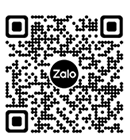Various revisions to the current ASTM F963-08 Standard are in the process of final review and balloting by ASTM working committees comprising of toy industry manufacturers, importers, consumer groups, third party test labs and the CPSC (in an advisory capacity).
Under CPSIA any revisions approved by ASTM to F963 are reviewed by the CPSC, who has 90 days to determine if the Commission has any objections. If there are no objections to the revision, which will likely be ASTM F963-2011, it becomes a mandatory standard. If there are certain objections, only those revisions found acceptable to CPSC become statutory requirements (the ASTM F963 standard became mandatory under the CPSIA).
On a closely related subject; on July 20, 2011, the CPSC voted unanimously to approve new third party testing requirements to ensure the safety of children’s toys1. Although the U.S. toy industry has been required to comply with mandatory toy safety requirements since February 2009, the Commission approved a stay of enforcement on the requirement for third party testing and certification of children’s toys until December 31, 2011 to allow additional time for manufacturers, importers and private labelers to put a third party testing program into place. Third party testing and certification of compliance will be enforced for toys manufactured or imported after that date.
A brief summary of the currently proposed revisions to the ASTM F963-08 version follow:
1) Impaction and Spherical Ends:
no substantial change to the intent; adds clarification of toy shapes with additional pictorial examples; changes title to “Certain Toys with Nearly Spherical Ends”.
2) Toy seat definition:
a seat that has play value for a child, not just a chair.
3) Stability of Ride-On toys and seats:
clarifies test methods for variations in seating design to include fore and aft as well as sideways directions, and will include ‘toy seats’ in stability tests
4) Overload requirements for Ride-On toys and seats:
clarification that ‘toy seats’ are included in the standard and furniture is excluded; specific overload test method added to reflect how third party labs have historically been conducting this testing.
5) Plastic Film:
section title changed to include all plastic film in toys instead of just packaging; test method revised to eliminate duplicate details.
6) Exclusion for soft filled toys:
sections for Rattles, Squeeze toys and Teethers revised for consistency with U.S. Federal Rattle requirements and EU EN 71-1 on “Shape and Size of Certain Toys”; clarifies testing for soft toys with internal rigid components.
7) Jaw Entrapment:
gauge size requirement modified to add a third dimension; added requirement for gauge to pass completely through the opening.
8) Strings and flying devices:
“Resistivity” changed to “Resistance” for consistency with EN 71-1 and accuracy of language; terminology change only.
9) Flammability:
changed “should” to “shall” in section A4.6.3.6 with regard to the number of samples to be used for determination; making this a ‘directive’ rather than a ‘suggestion’.
10) Squeeze toys attached to rings:
revised to exclude portions of a toy that do not contain a squeeze toy function; e.g. rings with squeeze toy attached would not require testing the ring.
11) Additional exclusions:
“Constant Air Inflatables” and “Juvenile Products” added to section 1.4 exclusions scope.
12) Yo Yo Tether balls:
clarify measurement of extended tether when rotating.
13) Toy Chest inclusion in F963:
Toy Chest requirements added back into the Standard due to CPSIA rules, and ASTM F834 Toy Chest Standard withdrawn.
14) Projectiles:
consideration given to ISO and EN71 standards; proposed revisions include projectile travel distance of less than 300mm; whether projectiles are ‘small parts’, and whether there are sharp edges or points or suction cups; limits on projectile size; new gauge for checking impact area in place of 2mm radius with a 0.25 mm radius on any edge; development of a common set of “improvised” projectiles for testing purposes to improve consistency in testing.
15) Heavy Elements:
adds new section for substrate materials to include CPSIA lead content limit, soluble migration for other heavy elements at same levels as EN 71; excludes substrates that are inaccessible or cannot be mouthed or sucked; includes provisions for metal, glass and ceramic small parts; excludes materials that are excluded for lead in 16 CFR 1500.91; includes toys for children less than 6 years that are likely to come in contact with the mouth; includes limits for cadmium in metallic toys or components of toys with specific test requirements; includes a total metal content screening method which would eliminate soluble testing total results are less than soluble limits; allows compositing (defines methodology) for total metal content screening test but not for soluble testing; provides for alternate methods (i.e. XRF testing) provided the test lab can validate method accuracy;
16) Projection hazards in bath toys:
adds new sub-section to ‘projections’ requirements addressing bath toys; refers manufacturers to a new annex that provides guidance for designing bath toys to minimize potential injuries that can be caused by vertical, rigid projections of toys floating in shallow water or resting on bottom of bath.
17) Magnets and Magnetic Components:
revises definitions to change “flux density” to “flux index”; removes regular use and abuse tests and relies on magnet abuse test only; adds requirement for information on package and instructions for toys that contain magnets with flux index > 50, even though they are not “hazardous magnets” or “hazardous magnetic components”; adds a soaking test for magnets in wood toys, toys intended to be used in water or have mouth pieces; clarifies ‘cycle’ testing for various combinations of magnets and metal in toys.
The above list that represents the major changes to ASTM F963, may not include some ‘editorial’ and/or minor revisions. Some of the afore-listed subjects are under continuing discussion and subject to change before the final standard is released.
